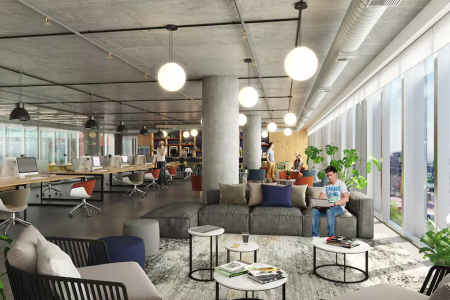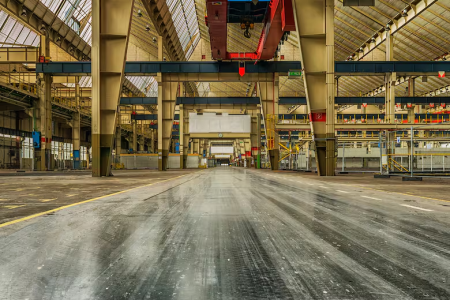BuySellBA
Administrator
The perfect equation: how a full occupation of the m2 available in the real estate market would impact the economy - La Nacion Propiedades
Source:

La ecuación perfecta: cómo impactaría en la economía una ocupación total de los m2 disponibles en el mercado inmobiliario
¿Qué ocurriría en la economía con una demanda plena de metros cuadrados logísticos y corporativos?
December 20, 2024
By Domingo Speranza
What would happen to the economy with full demand for logistics and corporate square meters?

What would happen if logistics and corporate centers were fully occupied?
trigger question: How would the full occupation of logistics and corporate centers translate into money in economic terms?
The projection gives truly astronomical figures. And the numbers speak for themselves .
In the city of Buenos Aires and the northern corridor there is a class A inventory of 1,826,261 m². And, by the way, there is another class B inventory. That represents an average sales value of US$7.7 trillion , or US$7.7 billion, at US$4,250/m² average for the class A sector.
Just considering how much rent that number of square meters would generate if they were rented out, it is about US$513 million per year , at US$23.4/m². In addition, about 200,000 people work in those offices; about 30,000 more visit them and operate, maintain and clean them, generating an ecosystem around them. That is why, when they are empty, the loss or drop in rent is about US$84 million per year .

Empty offices
In the logistics sector , the figures are quite similar to those of the office universe, since the inventory totals 1.8 million m² , at US$650/m² for replacement, and US$800/m² for sale. The assets are then around US$1.3 billion, which generate an average income of US$145 million per year . With vacancy almost zero, on average, and currently at 5.6%, the economic impact of the drop in rent is US$8.2 million per year.
So, there is an immense wealth that only between offices and class A deposits adds up to US$9 billion , where more than half a million people work and interact with the same amount each year, impacting infrastructure and businesses .
Today, and we are seeing it, there is a competition between cities to decide which has the best offer , since talent has to work somewhere and each city competes to attract it based on its quality of life, its climate and its landscape. So, with good infrastructure ; with airports and connectivity; with means of transport, routes and streets, cities are more competitive, demand and real estate value grow and, therefore, income and investments .
It is certainly important to know how much all this available wealth is worth, how much it amounts to, because it is in private hands and, in addition to being able to house work and generate real estate income, it pays taxes for the State. In this sense, there is another extraordinarily relevant and irreplaceable point of the real estate business and value: yes, of course, it is about the land.

Real Estate remains a good investment for both corporate and institutional investors as well as individuals
Land is irreplaceable and therefore has a permanent appreciation . Every time the urban area grows, the value of land for logistics increases, at a rate of 3 to 5% annually for the last 20 years , at a rate that continues, although with better and worse moments, and that is why real estate continues to be a good investment, both corporate or institutional, as well as individual.
The latest market photographs , although not precise, do give an indication of what can be expected from it: in terms of logistics today and on a local scale, the last mile (radius from 0 to 15 km) has zero vacancy . Meanwhile, the energy, financial and knowledge-based economy sectors are absorbing corporate square meters – vacancy is falling slowly as square meters are added – and are also awaiting the arrival of foreign investment .
(*) The author is founder and CEO of Newmark Argentina
www.buysellba.com

